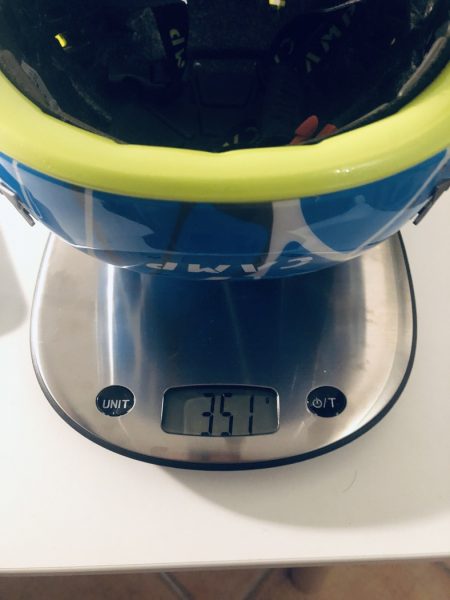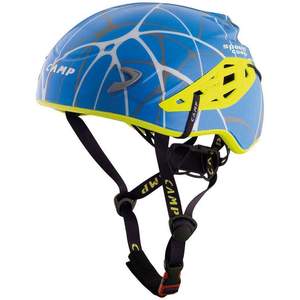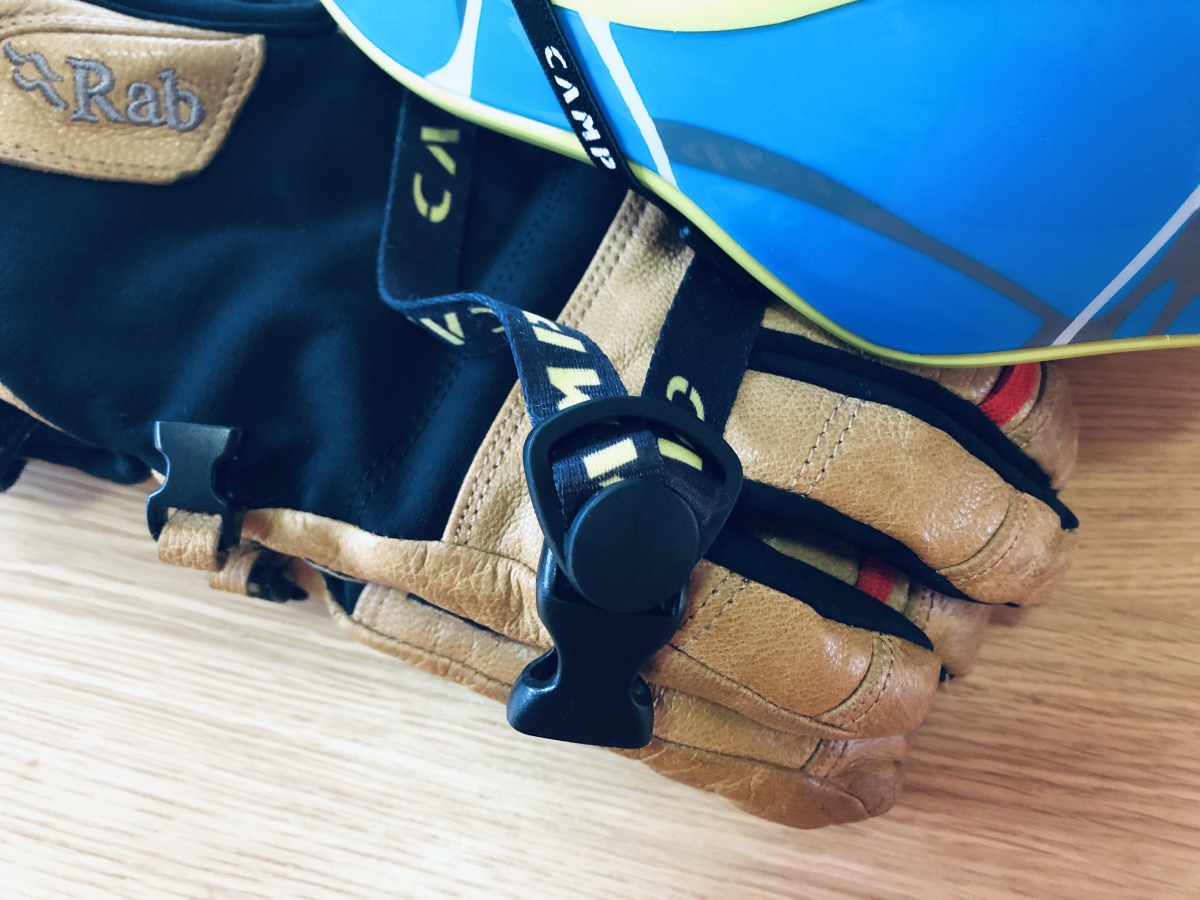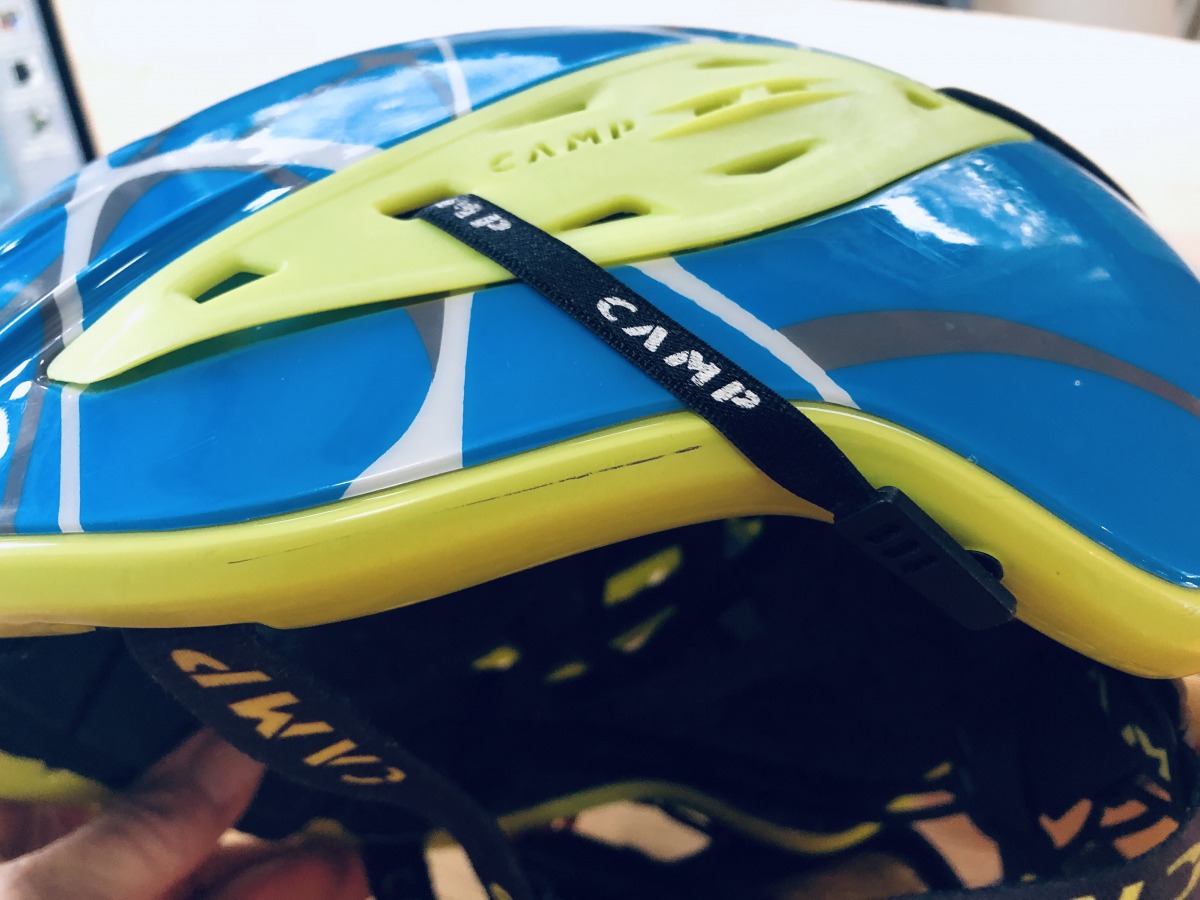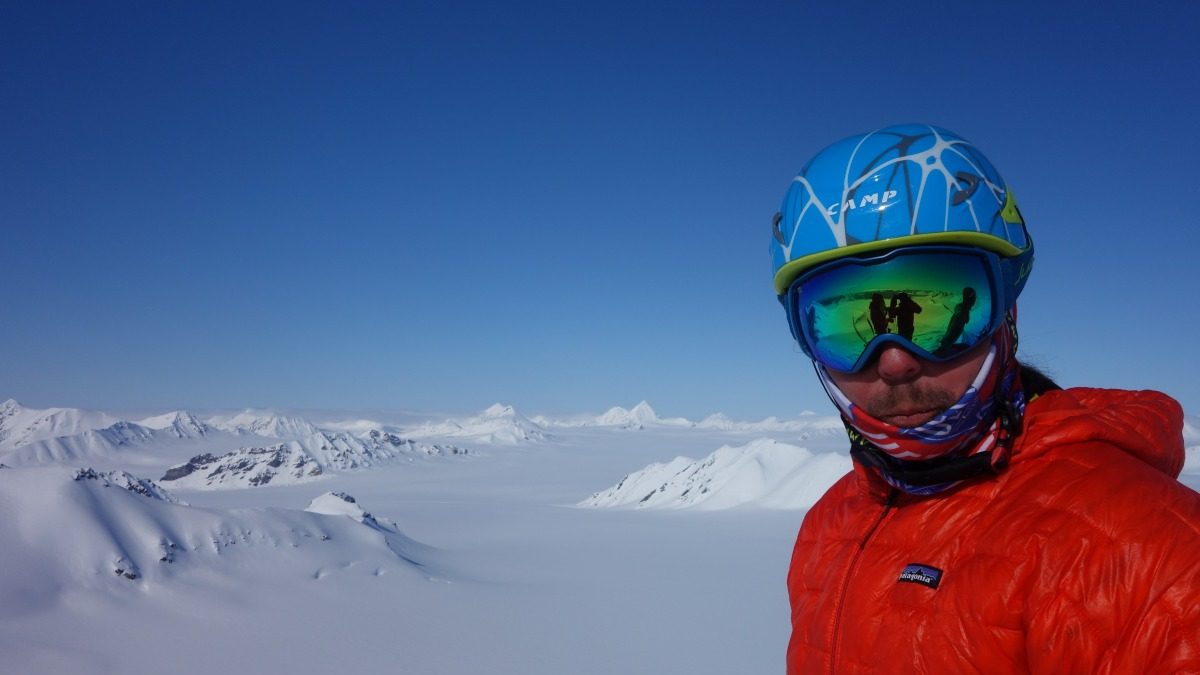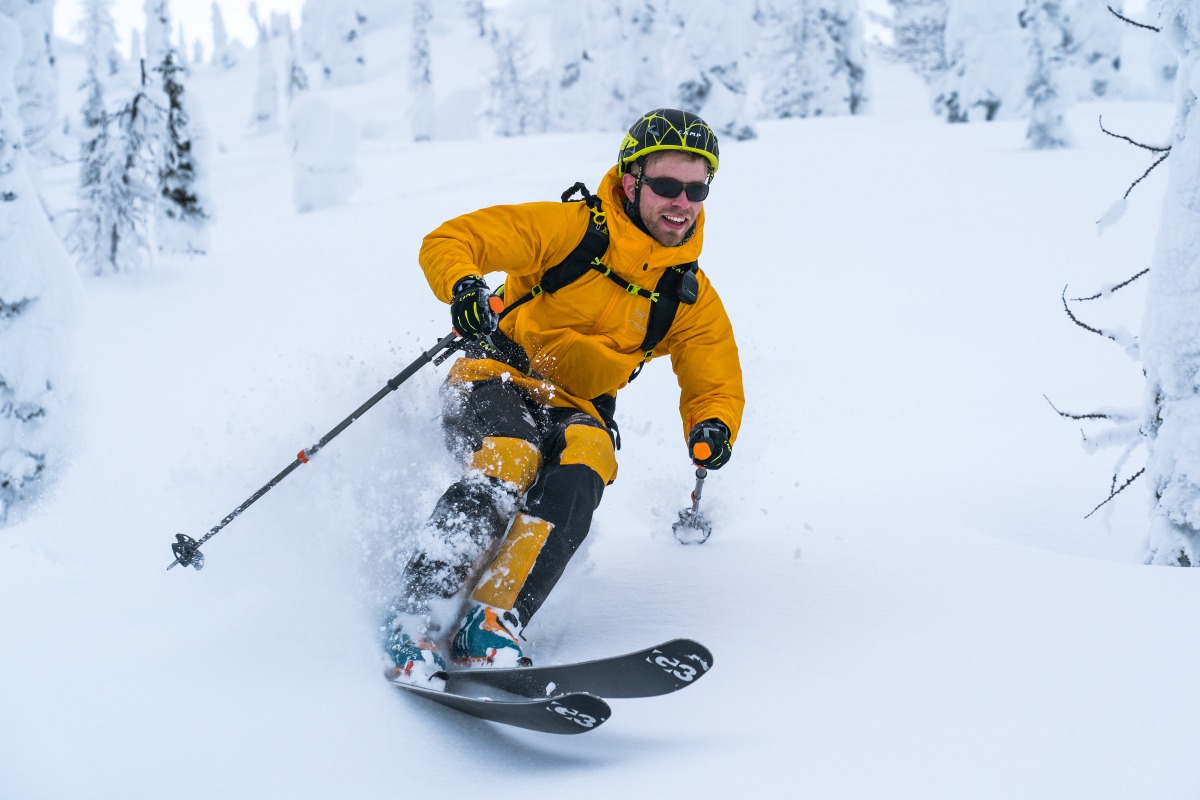
Scott Von Thun, styling in the CAMP Speed Comp on an AIARE 2 course outside Nelson, BC. Photo: Mahting Putelis
I remember watching Evel Knievel as a kid. White leather, stars and stripes, big Harley Davidson, and screaming fans. His head always looked giant to me, that bulbous moto helmet bobbing as he’d launch over 350 school buses or pile into his rocket (Snake River Canyon, bro, remember?).
The first time I ski toured in a helmet, sometime in the early 2000s, I remember feeling like I thought Evel looked — top heavy, like a bobblehead doll. And I didn’t have the white leather one-piece to fall back on, either.
These days, luckily for me, ski helmets have gotten lighter, tougher, and cooler. Naturally, the weight-obsessed crew at CAMP has one of the frontrunners in terms of race-worthy options — the Speed Comp. I’ve had one for several years and it’s probably time to retire the thing (they say 3-5 years for a helmet like this), so here are my tasting notes on the thing before she hits the scarp heap.
Usage
Before I get down to dissecting the performance and details on the Speed Comp, I’ll give you the background. I scored my helmet from CAMP USA several years ago and since then I’ve toured with it in Canada, throughout the western US, on Svalbard, and the Alps. I’ve done everything from on-piste ski drills with my 10-year-old to corn turns in the high Arctic to couloir hunting to deep days in Kootenay old-growth. Truth is, it’s probably time for another helmet, but I’ve gotten a couple hundred days in this thing and there’s a few reasons why.
Stats
First and foremost among the reasons I’ve taken this helmet on so many ski missions is its weight. At 351g (12.6 oz.), it won’t weigh down your luggage, nor stress your neck out after a long day touring.
As climbing and ski helmets have shed grams over the years, I’ve heard horror tales of broken helmets, just from sliding them in/out of a backpack. Despite the Speed Comp’s featherweight, after dozens of days packing and unpacking, flying on planes, cramming gear in the back of vehicles, and yes, even whacking a few (small!) tree branches with the thing, I’ve done only cosmetic damage to it.
The Speed Comp relies on a thin plastic shell over expanded polystyrene (EPS). This will be familiar construction to most of you, as bike and climb helmets use identical technology. Like any EPS helmet, this is a “one crash” unit. This means any significant impact and you should retire the helmet.
What’s a significant impact? Certainly, anything that visibly cracks or compresses the material qualifies as significant. EPS effectively compresses to absorb impact — this tends to be effective at preventing lacerations and skull fractures but does very little to prevent concussion.
MIPS (Multi-Directional Impact System) and other systems claim to offer some protection against concussion, but I’ve yet to see impartial, robust data proving these claims. These systems also add weight and cost to a helmet. As yet, CAMP hasn’t adopted any of these strategies.
The Speed Comp comes in one size, fitting heads 54-60cm (21.3 to 23.6 in.) in circumference. I’ve got a big skull (I know, surprising given the goofery that comes out of my mouth), and wearing a beanie underneath the thing, I had to remove pads.
And yes, pads — there are a few hook-and-loop pads on the inside, in addition to a ratchet wheel that adjusts the circumference. Zero problem with the wheel do-hickey.
My only gripe with the construction of the Speed Comp is its webbing harness. The chin strap and adjustable sliders beneath tended to slip a bit over time. This required rejiggering during tours, which is a bit of a chafe, but nothing more.
Notable is the helmet’s EN (European Norm) dual-certification in both “alpinism” and “ski-mountaineering.” This is a nice feature, but if we’re honest with ourselves, neither test is particularly rigorous, so I’ll admit I have skied and climbed in helmets not certified for the activity.
Details
The Speed Comp enlists a minimalist attachment system for both goggles and headlamp. Traditional plastic clips on the front of the helmet securely affix a headlamp, while at the rear a short section of bungee/stretch cord holds either goggle or headlamp straps.
Along the side of the helmet, two tiny bits of nylon webbing have a small wedge on the end, which fits snugly into a hole on the shell of the helmet. This serves to hold goggle straps along the side of the helmet. Having done the infamous Grand Traverse (the death march skimo-race between Crested Butte and Aspen), and many other missions, the straps do what they are supposed to, no stress. The little side attachments take a bit of precision when inserting them into their holes, but other than that, easy and quick to deploy and manage.
Venting isn’t nearly as open as some helmets, particularly if you’ve used a cycling helmet or even a lightweight climbing helmet. On cold days, this is a welcome feature, but on a long, hot climb — it’d be nice to have some more venting. I tend to run hot, though, so perhaps it’s just me (and my muffin top).
If you need additional protection or warmth, CAMP does offer “ear muff” add-ons that will cover your ears. Never used ‘em — I go for the Buff system.
Performance
As advertised, it’s light, comfortable, and yes, even durable.
I whined above about needing more venting, but to get the weight down to 350g, I assume cutting more holes in the thing would mean adding material elsewhere. I tend to just remove the helmet for the up, though I enviously see partners simply flip up goggles, leave the helmet on, and disappear up the skin track. If I tried that, I’d arrive a sweating mash of soaked base layers and fogged eyewear!
The biggest endorsement I can say for the Speed Comp is that I often forget I’m wearing it at transitions. This results in my annoying habit of starting up the track, only to feel my internal temp rising like a hooker in church, which necessitates a quick stop for helmet removal. That aside, it’s testimony to the comfort and lean weight of the Speed Comp.
With only one size and shape available, I have heard of people finding the helmet incompatible with their melon. I recall cyclists modifying the inside of their helmets to customize fit, and they did this by compressing the EPS in certain places. You could conceivably do this with the Speed Comp, though this naturally voids the warranty and removes a bit of the EPS’s ability to deform/absorb energy. Not recommended, but people do it.
When compared to a dedicated alpine helmet, the Speed Comp won’t give you open/close vents, a rad-guy motocross visor, or quite as much coverage, but for touring, most of you won’t want all that bulk and weight anyway. I’d say the CAMP folks check most of the boxes on this particular piece of gear, as they often do.
$120, 351g, available in three color schemes. $30 ear muffs available.
Shop for the CAMP Speed Comp
Rob Coppolillo is the author of The Ski Guide Manual and an IFMGA-licensed mountain guide living in Chamonix, France.
Rob Coppolillo is a mountain guide and writer, based on Vashon Island, in Puget Sound. He’s the author of The Ski Guide Manual.

